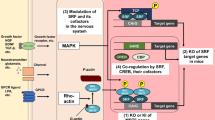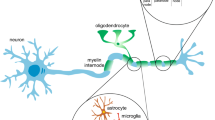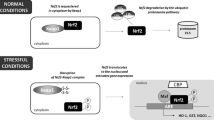Abstract
miRNAs are important factors for post-transcriptional process that controls gene expression at mRNA level. Various biological processes, including growth and differentiation, are regulated by miRNAs. miRNAs have been demonstrated to play an essential role in development and progression of hearing loss. Nowadays, miRNAs are known as critical factors involved in different physiological, biological, and pathological processes, such as gene expression, progressive sensorineural hearing loss, age-related hearing loss, noise-induced hearing loss, cholesteatoma, schwannomas, and inner ear inflammation. The miR-183 family (miR-183, miR-96 and miR-182) is expressed abundantly in some types of sensory cells in inner ear specially mechanosensory hair cells that exhibit a great expression level of this family. The plasma levels of miR-24-3p, miR-16-5p, miR-185-5p, and miR-451a were upregulated during noise exposures, and increased levels of miR-21 have been found in vestibular schwannomas and human cholesteatoma. In addition, upregulation of pro-apoptotic miRNAs and downregulation of miRNAs which promote differentiation and proliferation in age-related degeneration of the organ of Corti may potentially serve as a helpful biomarker for the early detection of age-related hearing loss. This knowledge represents miRNAs as promising diagnostic and therapeutic tools in the near future.


Similar content being viewed by others
References
Ware SL (2014) Human hearing loss. PeerJ PrePrints 2:e378v1
Tucci D, Merson MH, Wilson BS (2010) A summary of the literature on global hearing impairment: current status and priorities for action. Otol Neurotol 31(1):31–41
Jami MS, Hemati S, Salehi Z, Tavassoli M (2008) Association between the length of a CA dinucleotide repeat in the EGFR and risk of breast cancer. Cancer Investig 26(4):434–437
Lee RC, Feinbaum RL, Ambros V (1993) The C. elegans heterochronic gene lin-4 encodes small RNAs with antisense complementarity to lin-14. Cell 75(5):843–854
Garzon R, Calin GA, Croce CM (2009) MicroRNAs in Cancer. Annu Rev Med 60:167–179
Friedman RC, Farh KK, Burge CB, Bartel DP (2009) Most mammalian mRNAs are conserved targets of microRNAs. Genome Res 19(1):92–105
García-Estrada C, Barreiro C, Jami M-S, Martín-González J, Martín J-F (2013) The inducers 1, 3-diaminopropane and spermidine cause the reprogramming of metabolism in Penicillium chrysogenum, leading to multiple vesicles and penicillin overproduction. J Proteom 85:129–159
Mahmoodian sani MR, Hashemzadeh-Chaleshtori M, Mehri-Ghahfarrokhi A, Ghasemi-Dehkordi P, Saidijam M, Jami M-S (2016) MicroRNA-183 family in inner ear: hair cell development and deafness. J Audiol Otol 20(3):131–138
Ahmadinejad F, Honardoost MA, Mowla SJ, Teimori H, Ghaedi K (2016) miR-218 as a multifunctional regulator of oncogenic processes in different solid tumors. Genet 3rd Millenn 14(2):4276–4295
Honardoost MA, Naghavian R, Ahmadinejad F, Hosseini A, Ghaedi K (2015) Integrative computational mRNA-miRNA interaction analyses of the autoimmune-deregulated miRNAs and well-known Th17 differentiation regulators: An attempt to discover new potential miRNAs involved in Th17 differentiation. Gene 572(2):153–162
Kozomara A, Griffiths-Jones S (2011) miRBase: integrating microRNA annotation and deep-sequencing data. Nucl Acids Res 39(Database issue):D152–D157
Miller BH, Wahlestedt C (2010) MicroRNA dysregulation in psychiatric disease. Brain Res 1338:89–99
Guay C, Roggli E, Nesca V, Jacovetti C, Regazzi R (2011) Diabetes mellitus, a microRNA-related disease? Transl Res J Lab Clin Med 157(4):253–264
Tolia NH, Joshua-Tor L (2007) Slicer and the argonautes. Nat Chem Biol 3(1):36–43
Lee I, Ajay SS, Yook JI, Kim HS, Hong SH, Kim NH et al (2009) New class of microRNA targets containing simultaneous 5′-UTR and 3′-UTR interaction sites. Genome Res 19(7):1175–1183
Farazi TA, Hoell JI, Morozov P, Tuschl T (2013) MicroRNAs in human cancer. Adv Exp Med Biol 774:1–20
Ling H, Fabbri M, Calin GA (2013) MicroRNAs and other non-coding RNAs as targets for anticancer drug development. Nat Rev Drug Discov 2(11):847–865
Macfarlane LA, Murphy PR (2010) MicroRNA: biogenesis, function and role in cancer. Curr Genom 11(7):537–561
Lewis MA, Quint E, Glazier AM, Fuchs H, De Angelis MH, Langford C et al (2009) An ENU-induced mutation of miR-96 associated with progressive hearing loss in mice. Nat Genet 41(5):614–618
Ushakov K, Rudnicki A, Avraham KB (2013) MicroRNAs in sensorineural diseases of the ear. Front Mol Neurosci 6:52
Bhattacharya A, Cui Y (2015) Knowledge-based analysis of functional impacts of mutations in microRNA seed regions. J Biosci 40(4):791–798
Elkan-Miller T, Ulitsky I, Hertzano R, Rudnicki A, Dror AA, Lenz DR et al (2011) Integration of transcriptomics, proteomics, and microRNA analyses reveals novel microRNA regulation of targets in the mammalian inner ear. PloS One 6(4):e18195
Friedman LM, Avraham KB (2009) MicroRNAs and epigenetic regulation in the mammalian inner ear: implications for deafness. Mamm Genome 20(9–10):581–603
Beisel K, Hansen L, Soukup G, Fritzsch B (2008) Regenerating cochlear hair cells: quo vadis stem cell. Cell Tissue Res 333(3):373–379
Ghasemi-Dehkordi P, Allahbakhshian-Farsani M, Abdian N, Mirzaeian A, Saffari-Chaleshtori J, Heybati F et al (2015) Comparison between the cultures of human induced pluripotent stem cells (hiPSCs) on feeder-and serum-free system (Matrigel matrix), MEF and HDF feeder cell lines. J Cell Commun Signal 9(3):233–246
Wang XR, Zhang XM, Zhen J, Zhang PX, Xu G, Jiang H (2010) MicroRNA expression in the embryonic mouse inner ear. Neuroreport 21(9):611–617
Rudnicki A, Avraham KB (2012) microRNAs: the art of silencing in the ear. EMBO Mol Med 4(9):849–859
Rezaei H, Movahedi R (2010) High frequency of 35delG mutation in GJB2 associated with autosomal recessive nonsyndromic hearing loss (ARNSHL) in the province of Isfahan-Iran. Genet 3rd Millenn 8(3):2074–2078
Li H, Kloosterman W, Fekete DM (2010) MicroRNA-183 family members regulate sensorineural fates in the inner ear. J Neurosci 30(9):3254–3263
Kuhn S, Johnson SL, Furness DN, Chen J, Ingham N, Hilton JM et al (2011) miR-96 regulates the progression of differentiation in mammalian cochlear inner and outer hair cells. Proc Natl Acad Sci USA 108(6):2355–2360
Mencia A, Modamio-Hoybjor S, Redshaw N, Morin M, Mayo-Merino F, Olavarrieta L et al (2009) Mutations in the seed region of human miR-96 are responsible for nonsyndromic progressive hearing loss. Nat Genet 41(5):609–613
Patel M, Cai Q, Ding D, Salvi R, Hu Z, Hu BH (2013) The miR-183/Taok1 target pair is implicated in cochlear responses to acoustic trauma. PLoS One 8(3):e58471
Gu C, Li X, Tan Q, Wang Z, Chen L, Liu Y (2013) MiR-183 family regulates chloride intracellular channel 5 expression in inner ear hair cells. Toxicol Vitro Int J Publ Assoc BIBRA 27(1):486–491
Pang J, Xiong H, Yang H, Ou Y, Xu Y, Huang Q et al (2016) Circulating miR-34a levels correlate with age-related hearing loss in mice and humans. Exp Gerontol 76:58–67
Xiong H, Pang J, Yang H, Dai M, Liu Y, Ou Y et al (2015) Activation of miR-34a/SIRT1/p53 signaling contributes to cochlear hair cell apoptosis: implications for age-related hearing loss. Neurobiol Aging 36(4):1692–1701
Zhang Q, Liu H, McGee J, Walsh EJ, Soukup GA, He DZ (2013) Identifying microRNAs involved in degeneration of the organ of corti during age-related hearing loss. PloS One 8(4):e62786
Mendell JT, Olson EN (2012) MicroRNAs in stress signaling and human disease. Cell 148(6):1172–1187
Zhang Z, Liu K, Chen Y, Li Z, Yan N, Zhang J (2014) The expression of miR-183 family in the pathogenesis and development of noise-induced deafness. Lin chuang er bi yan hou tou jing wai ke za zhi = J Clin Otorhinolaryngol Head Neck Surg 28(7):468–472
Ryan AF, Harris JP, Keithley EM (2002) Immune-mediated hearing loss: basic mechanisms and options for therapy. Acta Oto-laryngol Suppl (548):38–43
Rudnicki A, Shivatzki S, Beyer LA, Takada Y, Raphael Y, Avraham KB (2014) microRNA-224 regulates Pentraxin 3, a component of the humoral arm of innate immunity, in inner ear inflammation. Hum Mol Genet 23(12):3138–3146
Li H, Fekete DM (2010) MicroRNAs in hair cell development and deafness. Curr Opin Otolaryngol Head Neck Surg 18(5):459–465.
Jami MS, Pal R, Hoedt E, Neubert TA, Larsen JP, Moller SG (2014) Proteome analysis reveals roles of L-DOPA in response to oxidative stress in neurons. BMC Neurosci 15:93
Jami MS, Salehi-Najafabadi Z, Ahmadinejad F, Hoedt E, Chaleshtori MH, Ghatrehsamani M et al (2015) Edaravone leads to proteome changes indicative of neuronal cell protection in response to oxidative stress. Neurochem Int 90:134–141
Tan PX, Du SS, Ren C, Yao QW, Zheng R, Li R, et al. MicroRNA-207 enhances radiation-induced apoptosis by directly targeting Akt3 in cochlea hair cells. Cell Death Dis. 2014;5:e1433.
Friedland DR, Eernisse R, Erbe C, Gupta N, Cioffi JA (2009) Cholesteatoma growth and proliferation: post-transcriptional regulation by microRNA-21. Otol Neurotol 30(7):998
Cioffi JA, Yue WY, Mendolia-Loffredo S, Hansen KR, Wackym PA, Hansen MR (2010) MicroRNA-21 over-expression contributes to vestibular schwannoma cell proliferation and survival. Otol Neurotol 31(9):1455
Li Y, Peng A, Ge S, Wang Q, Liu J (2014) miR-204 suppresses cochlear spiral ganglion neuron survival in vitro by targeting TMPRSS3. Hear Res 314:60–64
Rudnicki A, Isakov O, Ushakov K, Shivatzki S, Weiss I, Friedman LM et al (2014) Next-generation sequencing of small RNAs from inner ear sensory epithelium identifies microRNAs and defines regulatory pathways. BMC Genom 15:484
Zhu Y, Zong L, Mei L, Zhao HB (2015) Connexin26 gap junction mediates miRNA intercellular genetic communication in the cochlea and is required for inner ear development. Sci Rep 5:15647
Yan D, Xing Y, Ouyang X, Zhu J, Chen ZY, Lang H et al (2012) Analysis of miR-376 RNA cluster members in the mouse inner ear. Int J Exp Pathol 93(6):450–457
Chen J, Johnson SL, Lewis MA, Hilton JM, Huma A, Marcotti W et al (2014) A reduction in Ptprq associated with specific features of the deafness phenotype of the miR-96 mutant mouse diminuendo. Eur J Neurosci 39(5):744–756
Chiang DY, Cuthbertson DW, Ruiz FR, Li N, Pereira FA (2013) A coregulatory network of NR2F1 and microRNA-140. PloS One 8(12):e83358
Huyghe A, Van den Ackerveken P, Sacheli R, Prevot PP, Thelen N, Renauld J et al (2015) MicroRNA-124 Regulates Cell Specification in the Cochlea through Modulation of Sfrp4/5. Cell Rep 13(1):31–42
Sivakumaran TA, Resendes BL, Robertson NG, Giersch AB, Morton CC (2006) Characterization of an abundant COL9A1 transcript in the cochlea with a novel 3′ UTR: Expression studies and detection of miRNA target sequence. J Assoc Res Otolaryngol JARO 7(2):160–172
Thoenes M, Zimmermann U, Ebermann I, Ptok M, Lewis MA, Thiele H et al (2015) OSBPL2 encodes a protein of inner and outer hair cell stereocilia and is mutated in autosomal dominant hearing loss (DFNA67). Orphanet J Rare Dis 10:15
Wang XR, Zhang XM, Du J, Jiang H (2012) MicroRNA-182 regulates otocyst-derived cell differentiation and targets T-box1 gene. Hear Res 286(1–2):55–63
Ding L, Liu J, Shen HX, Pan LP, Liu QD, Zhang HD, et al. (2016) Analysis of plasma microRNA expression profiles in male textile workers with noise-induced hearing loss. Hear Res 333:275–282
Author information
Authors and Affiliations
Corresponding author
Ethics declarations
Funding
This study funded by Research and Technology Deputy of Hamadan University of Medical Sciences (Hamadan, Iran) and Shahrekord University of Medical Sciences, Shahrekord, Iran (Grant number 1724).
Conflict of interest
Authors declare no conflict of interest for the manuscript.
Rights and permissions
About this article
Cite this article
Mahmoudian-sani, MR., Mehri-Ghahfarrokhi, A., Ahmadinejad, F. et al. MicroRNAs: effective elements in ear-related diseases and hearing loss. Eur Arch Otorhinolaryngol 274, 2373–2380 (2017). https://doi.org/10.1007/s00405-017-4470-6
Received:
Accepted:
Published:
Issue Date:
DOI: https://doi.org/10.1007/s00405-017-4470-6




